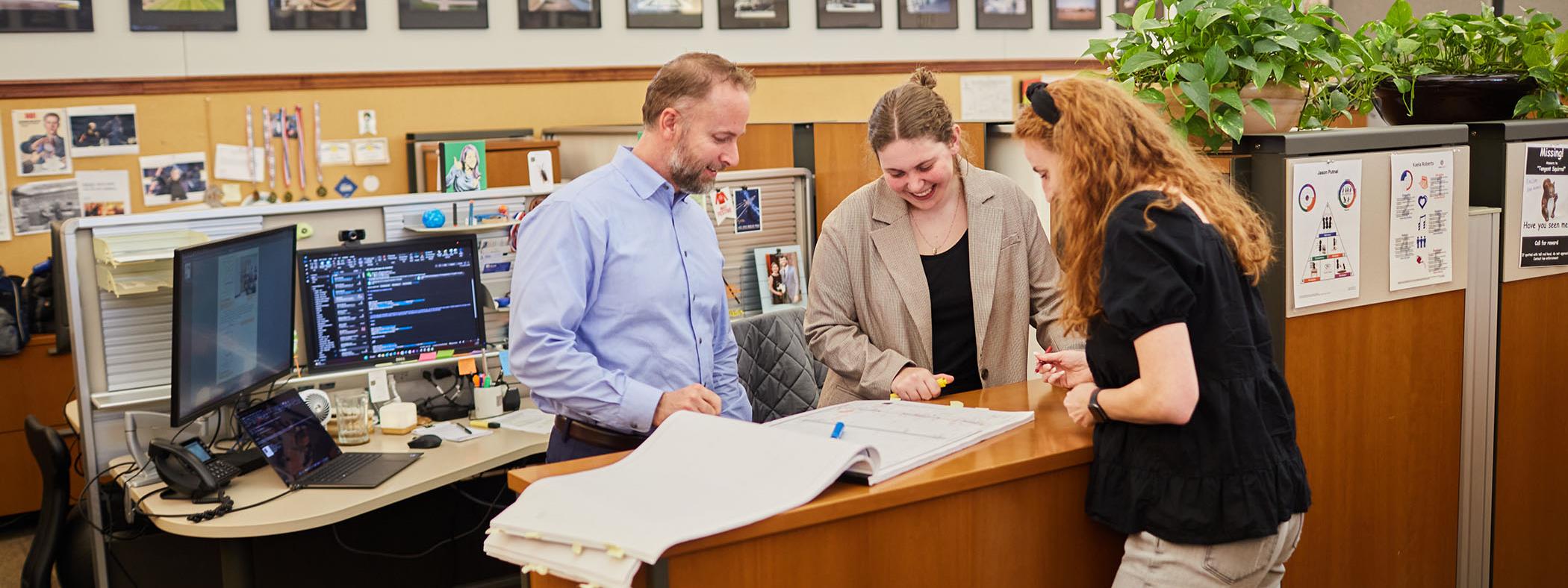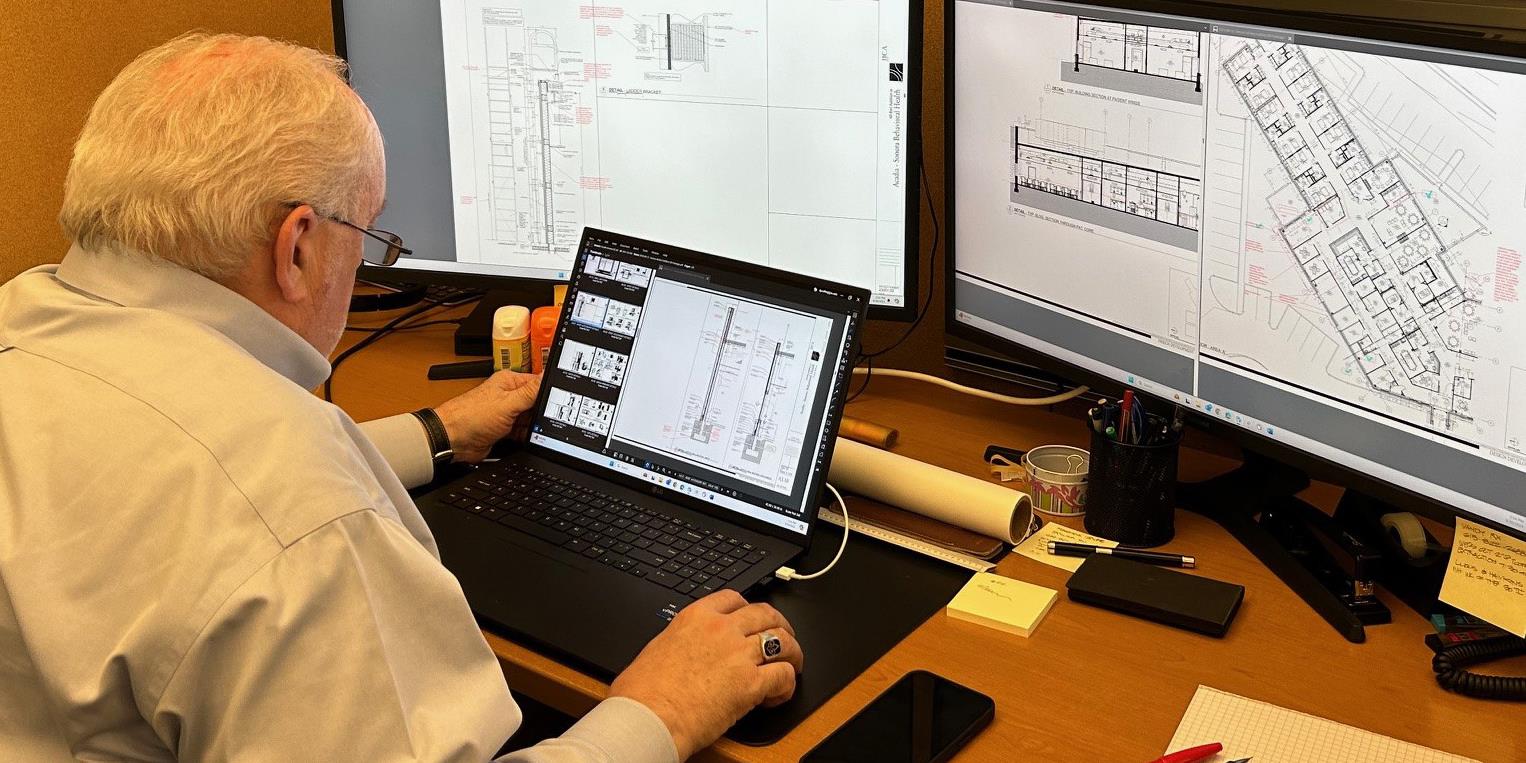


At JJCA, checksetting isn’t just a final review; it’s a critical step to ensure construction documents are airtight. Our David Proffitt has decades of architectural know-how and puts it best: “Checksetting is about catching those little details that could become big issues in the field. It’s our chance to make sure everything is as clear and precise as possible.”
Most architectural firms conduct a quality control process that includes peer review of the documents to improve the quality and reduce the risk of problems in the field. Checksetting includes regulatory review, constructability and completeness, and specialty review for client-specific requirements.
Jason Putnal generally leads our JJCA checksetting process and provides review teams with the appropriate instructions and firm standards. “Having David, a seasoned professional, as a dedicated checksetter on every project adds greater depth to our quality control process. David has a special knack for construction details and identifying coordination issues between design disciplines that are difficult to catch before construction begins. Our goal, as always, is to avoid change orders, and David’s experience and talent puts us in a position to continue to improve the quality of our documents.”
So what makes the JJCA design smarter so our projects are built better?
David’s approach is unique because of his deep understanding of both design and construction. He knows that good design isn't just about aesthetics, functionality, and practicality. “Our goal,” David explains, “is to create documents that show the contractor we understand how buildings are built. We want to reduce the questions they have and the problems they might encounter when they get on-site.”
This proactive approach has a ripple effect. By addressing potential issues before the first brick is laid, we save time and money down the road. Contractors appreciate the clarity, as it minimizes confusion and misinterpretation. Project owners feel confident that the design team has their back in terms of creativity and understanding the intricacies of construction.
David says it best: “Checksetting demonstrates to the owner that we’re delivering a well-thought-out design that’s going to meet their goals for schedule, budget, and construction quality.” In other words, it’s our way of showing that we don’t just design buildings—we design solutions."
This process also allows the team to spot any design conflicts early. “Sometimes things look perfect in the drawings,” David says, “but when you think about how the building comes together, you realize there’s a better way. Checksetting helps us find those opportunities to improve.”
For example, let’s say the design calls for a group of plumbing lines and two roof drains to travel down into a wall that is only 6” wide. Our process helps us find that challenge in advance and create a chase to accommodate those lines, all while making sure that the chase is aesthetically acceptable for the client. David spots this and suggests a slight adjustment to avoid potential headaches during construction and certainly avoid questions on resolving the issue in the field. These minor tweaks can make a huge difference in reducing delays and contributing to the quality of the finished building.
In the end, checksetting is about more than just double-checking drawings. It’s about enhancing communication, reducing risk, and delivering a final product that truly works for everyone involved. As David says, “It’s about getting it right before we build.” And when you get it right on paper, you get it right in the real world.
With David contributing to our checksetting process, JJCA consistently delivers designs that reduce conflicts, save time, and meet client goals with precision and expertise.
Comments
Leave a Comment